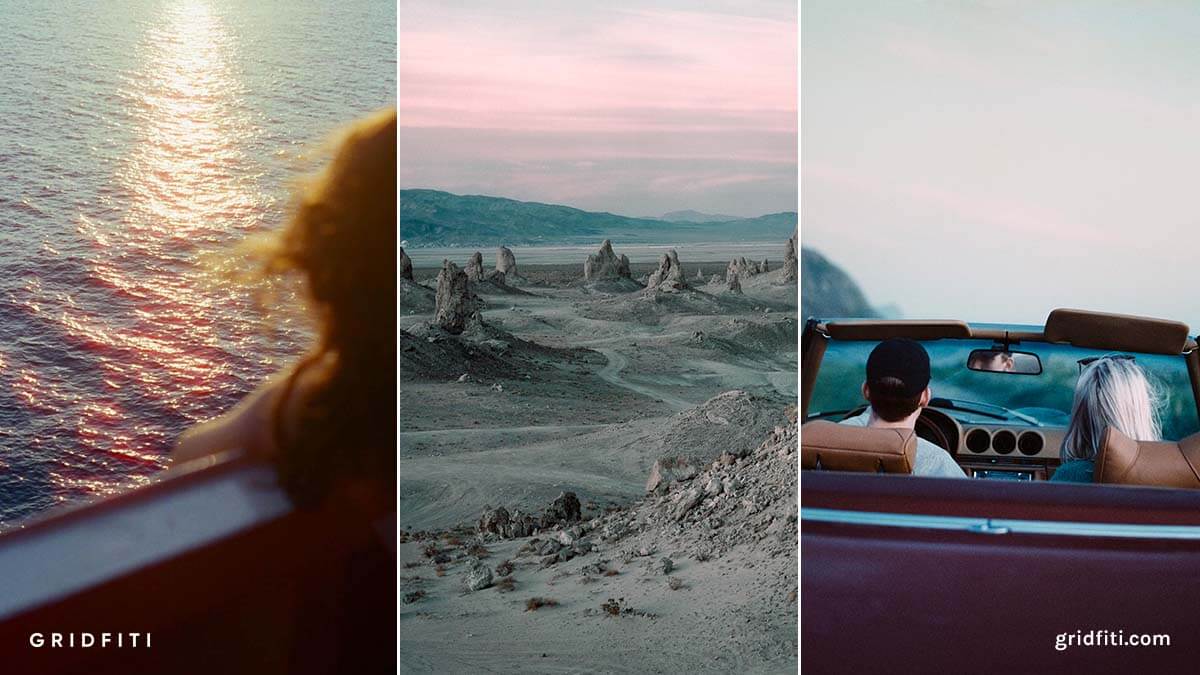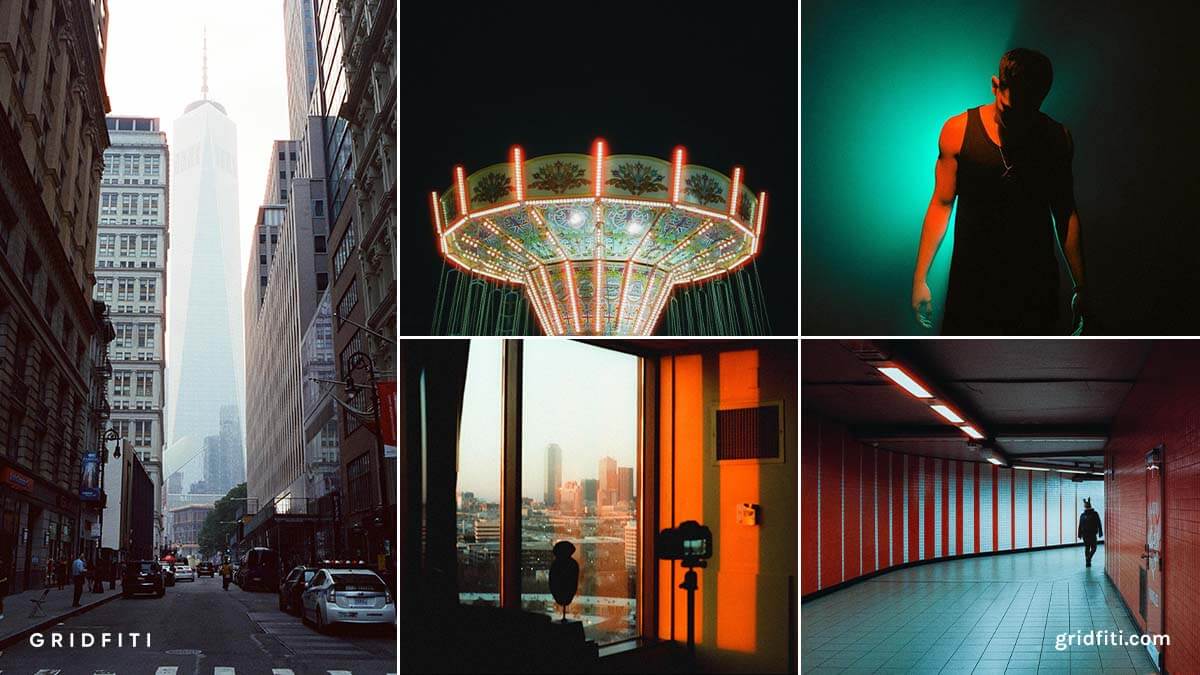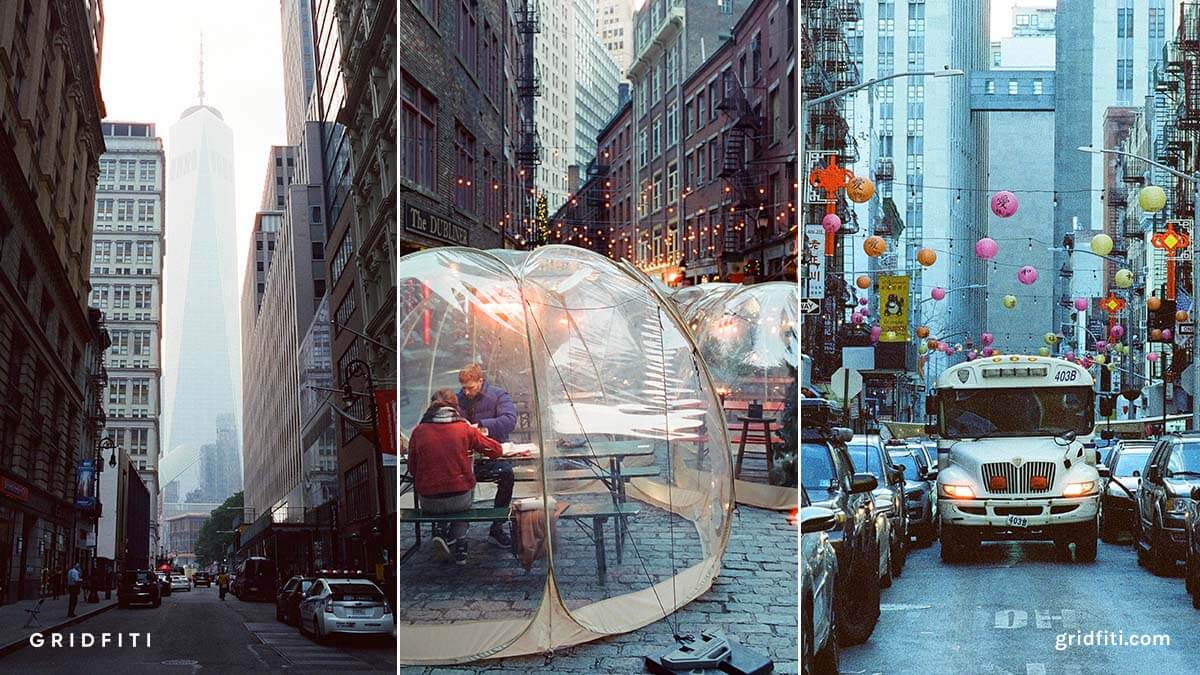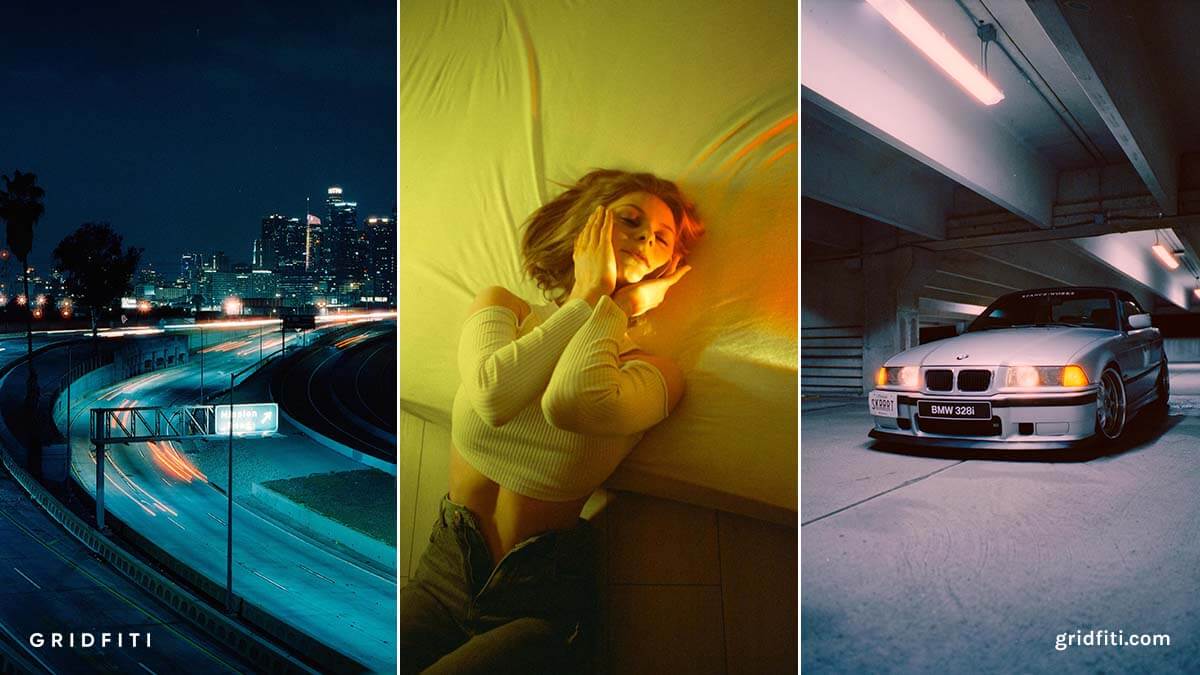CineStill 800T is a popular film stock known for its cooler, cinematic hues thanks to its tungsten balancing and magical glow around highlights (aka halation). You can see this elusive look in tons of CineStill 800T sample photos – from daylight to nighttime, and from cityscapes to portraits.
Photographers often set their meter to 1600 or 3200 ISO (or adjust their exposure compensation) with this film — also known as “pushing film”. — resulting in more pronounced contrast and grain.
This approach is versatile across all types of photography — so check out these tips, tricks, and sample photos of CineStill 800T pushed to 1600 and 3200!
If you’re looking to learn more about CineStill and its capabilities, check out these posts we’ve published about this film stock:
- Shooting CineStill 800T at Night
- Shooting CineStill 800T During the Daylight
- The Best CineStill Alternatives
- CineStill vs. Portra
- Best CineStill Presets & Filters
Want more film photography tips? Join our mailing list, and check out our several other film photography guides.
Why Push CineStill 800T?
The concept of pushing or pulling film can be tricky for beginners, but in essence, pushing your film means “tricking” your camera into thinking you’re shooting a roll of 1600 or higher speed film instead of CineStill 800T’s box speed of 800 ISO. This allows you to shoot at higher shutter speeds or smaller apertures, resulting in lower exposure.
Pushing CineStill 800T increases contrast in your images and reduces the risk of motion blur thanks to higher shutter speeds, making it easier to work in low light settings.
To push CineStill 800T one stop to 1600, insert the film into your camera and set the metering to treat it as 1600 ISO. For 3200 ISO, turn it up one more stop. On a point-and-shoot, you can achieve this by adjusting your exposure compensation +1 or +2.
If you decide to push your film, just be sure to mention this to your film lab – as pushed film requires a different developing process.
Get CineStill 800T:

Want to add the CineStill look to your digital photos? Check out the Ultimate CineStill Lightroom Preset Pack, an all-in-one preset pack including presets for 800T, 400D, 50D, BwXX, a halation glow action, and more.
Pushing CineStill 800T For Daytime Photos
Daytime is an ideal time to push CineStill 800T.
Think of it like this: your camera thinks your film’s ISO is higher than 800 (which is very sensitive to light), so it will adjust light absorption accordingly — as your camera’s suggestions will act to accommodate the 1 stop push.
This effectively exposes the film a little less than it’s intended to be – coming in the form of either tighter aperture or a higher shutter speed. The result of this will be a much more contrast-y image with deep shadows. Check out these renditions!
 Photos by u/cheerymy, u/ChillonDang, u/joko2105 on Reddit
Photos by u/cheerymy, u/ChillonDang, u/joko2105 on Reddit
Pushing CineStill 800T For Low-Light & Night Photos
Pushing CineStill 800T at night offers several advantages. Firstly, you can shoot at faster shutter speeds compared to the suggested 800 ISO speeds, so you wont miss a moment. Secondly, pushing film increases the grain and fades the blacks of your photos.
 Photos by u/gosserd, u/grainisgurt, u/_ShakenNotStirred, u/YungLeo925, u/hpecclee, u/matthyshaddouche on Reddit
Photos by u/gosserd, u/grainisgurt, u/_ShakenNotStirred, u/YungLeo925, u/hpecclee, u/matthyshaddouche on Reddit
Pushing CineStill 800T for Street & City Photos
Street photos come to life with the added sharpness from higher shutter speeds and increased contrast, highlighting shadows and details. The higher shutter speed suggestions also help capture the action and movement in the streets. Check out these examples of street shots taken on CineStill 800T pushed to 1600 ISO!
 Photos by u/asonjones on Reddit
Photos by u/asonjones on Reddit
Pushing CineStill 800T For Portrait Photos
Portraits also benefit from pushing CineStill 800T. Enhanced shadows accentuate facial features, outfits, and overall textures — adding a stylized look to your shoot. The increased depth creates a striking, dramatic look!

Pushing CineStill 800T to 3200
Most of the photos you’ve seen above are pushed to 1600, but some photographers push CineStill 800T to 3200 – a full 2 stops up!
This technique amplifies the benefits of pushing film, resulting in more pronounced shadows, increased contrast, and higher shutter speed or tighter aperture suggestions from your camera’s metering. To compensate for less exposure when pushing to 3200, photographers often slow down the shutter speed (often using a tripod), lower the aperture as much as possible, or increase ambient lighting. Check out these photos of CineStill 800T pushed to 3200!
 Photos by u/Animalhesus, u/seaweedOK1099, u/solidifiededgez on Reddit
Photos by u/Animalhesus, u/seaweedOK1099, u/solidifiededgez on Reddit
Do you push your CineStill 800T film? If so, let us know in the comments below!
Gridfiti is supported by its audience – when you buy something using the retail links in our posts, we may earn a small commission at no additional cost to you. Read more about our affiliate disclaimer.
